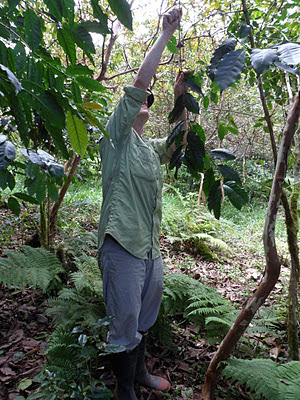 |
| Volunteers playing with children from a local preschool. |
One of our most successful initiatives with children of San Cristobal is through the hippo therapy program held every Tuesday and Thursday afternoons. Hippo therapy, or equine movement therapy, is a type of physical therapy that uses a house to address functional limitations, impairments, and disabilities in individuals with neuromusculoskeletal dysfunctions. The therapy helps individuals develop balance, body awareness, and muscle tone through the interaction with the horse's movement. Our therapy program works with disabled children through a variety of activities: leading the horses while the children are riding in various positions to stimulate development, teaching self-sufficiency skills, and interacting with children and their family members through games and play. All of the parents have stressed how significant of an impact this program has on the development of their children.
 |
| One of our clients in the hippo therapy program. |
Hacienda Tranquila itself is located next to the La Soledad community school, and we have a history of positive engagement with the students and professors. Recently, four of the local students had the opportunity to visit the Galapagos Science Center located at the University of San Francisco Quito in town. With the assistance of the Hacienda, the students were given a tour of the facilities and equipment, and were able to use some of the tools for a brief activity. The students themselves were a bit shy, but with a little encouragement, talked with the guide and asked some good questions. Just having that exposure I'm sure will give the students the idea that they too can be scientists and use cool equipment!
 |
| Some of the students at the Galapagos Science Center. |
In fact, a recent donation to the school included a brand-new microscope, tools for obtaining samples, and a hand-held microscope that the students can use outside. The Hacienda helped the school understand how to use the equipment, so I'm sure some neat experiments and unique learning will be taking place in the future.
 |
| The new science equipment. |
 |
| The professor and students at the community school. |
We have also helped around the school through painting buildings when needed, cleaning up trash and other debris around the grounds, and offering English tutoring for the students. The work we have done in and around the community has allowed the volunteers to establish a meaningful connection that will certainly impact the future success of the students.
Cheers,
Hacienda Tranquila












